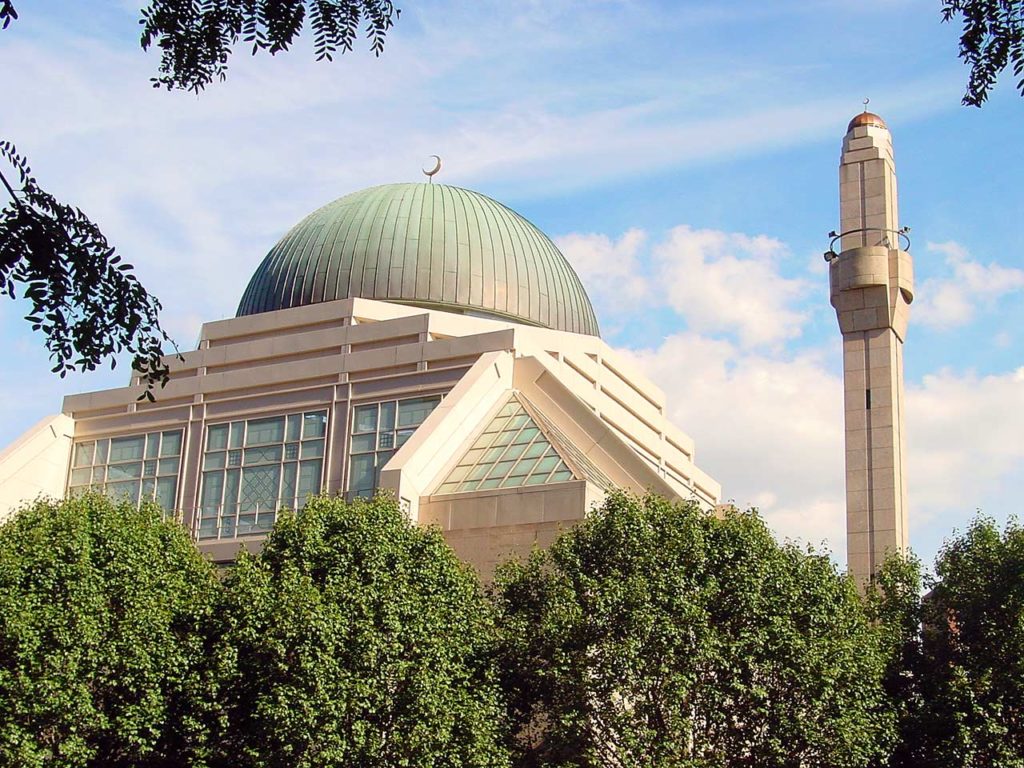Islamic Cultural Center of New York
Third Avenue between 96th and 97th Streets
Manhattan
Natural History special issue
Part of City of Stars photo essay.

One of the most striking buildings in the city, this mosque is located on the Upper East Side of Manhattan. The thin crescent Moon is the preeminent symbol of the Islamic faith and can be seen atop the dome as well as the minaret. Ramadan—Islam’s holiest period—is the ninth month of the year, and its start is signaled by the first sighting of the young crescent Moon without the aid of a telescope. In the days preceding Ramadan, the Hayden Planetarium typically receives several hundred phone calls from worshipers asking for confirmation of the day they should expect to see the crescent Moon.
Like all mosques, this one was built to face Mecca, in Saudi Arabia. Easier said than done. If Earth were flat, all you would need to do is have the building face Mecca straight on. But Earth’s curved surface presents a problem whose full solution requires the application of a branch of mathematics called spherical trigonometry.
The Mosque pictured here is in the middle of New York City—at 74° 45′ west longitude and 40° 56′ north latitude. Mecca can be found at 39° 49′ E and 21° 27′ N. When you do the math, you’ll find that the Mosque faces the direction you would travel along Earth’s surface directly above the straight line that connects New York City to Mecca through the solid Earth. Such a route is more formally called a geodesic or a great circle route and represents the shortest distance between any two points on a curved surface, or even between any two points in the curved space of the universe.
With exceptions for the need to fly near tracking stations and avoid air space over unfriendly countries, commercial airplanes chart their journeys entirely along geodesics, which accounts for all those odd-looking flight paths over Greenland and northern Canada for trips that connect the United States and Europe.
Near the center of the Great Mosque in Mecca is the Ka’bah, the shrine that houses the black stone that is one of Islam’s most sacred relics. By some accounts, the stone may not of this Earth but a meteorite from interplanetary space.

